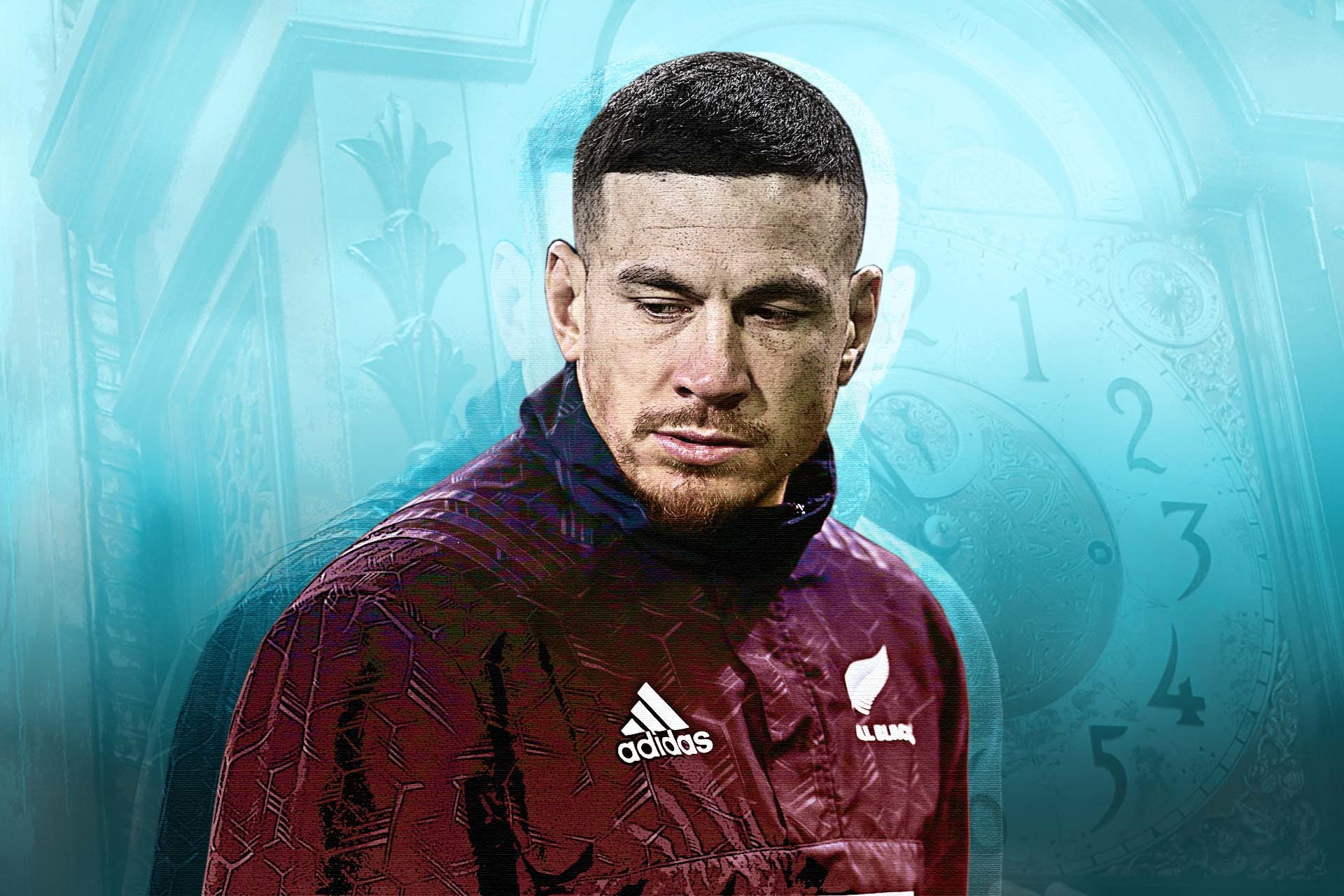Father Time remains undefeated.
The All Blacks’ mercurial midfielder Sonny Bill Williams is yet to completely submit, but few can deny that the 32-year-old’s time on the pitch is running out.
With 14 years of professional sport under his belt, Williams remains a physical marvel unlike any we have seen before.
14 years is a long time to produce at the top level of anything, let alone professional sports.
It’s also a long time to endure the thousands of tackles, batters and bruises a career in rugby entails. But Sonny Bill Williams is tough.
The next time Williams pulls on a jersey – most likely late next month – he will be 33 years old, and the oldest face in Steve Hansen’s All Blacks squad.
With a potential third Rugby World Cup in sight, Williams’ body has begun to stall and sputter right before the finish line.
When you look at Williams’ lengthy injury history, it’s a minor miracle that he still has both legs left to stand on.
His first major surgery as a professional athlete came in 2005, during his second NRL season with the Canterbury Bulldogs.
Aged 19 – and just eight months removed from winning the NRL Grand Final as the youngest player to feature in the big dance – the kid from Mount Albert who was still growing into his 193-centimetre frame needed arthroscopic surgery to repair a torn meniscus. The injury was suffered during his comeback appearance after missing the previous nine games with an ankle injury.
After winning the Grand Final in 2004, Williams managed to appear in just 41 of his side’s next 78 games.
Club doctor Hugh Hazard told the Sydney Morning Herald in 2006 that Williams’ injury concerns would lessen as his physical development progressed.
“As he gets older he’ll put on more lean body mass and get stronger and hopefully that will assist him,” Hazard said.
Hazard was right as Williams bounced back, managed to stay relatively healthy for the next two seasons and shake the harsh ‘injury prone’ label bestowed upon him, before breaking his arm in the 2007 NRL semi-final while tackling Parramatta Eel Nathan Hindmarsh.
Three extremely successful code switches after 2008 – from union (2008-2012) to league (2012-2014) and then back to union (2014-present) – and a few professional boxing bouts followed. It seemed like Williams’ constantly nagging injury woes were finally put to bed.
Until they reared their ugly heads again. And again. And again.
Like it had done over ten years earlier, Williams’ body abandoned him.
Arguably the worst injury of his career came in 2016 at the Summer Olympic Games, when the then 30-year-old ruptured his Achilles in the first match of his Olympic rugby sevens campaign.
History tells us that Achilles ruptures at age 30 or later are, more often than not, career-ending. If they don’t force you off the field, court or pitch for good, they usually correlate with a significant drop in production.
But Williams shaped as a special case. After his rupture, the once-in-a-generation athlete beat the odds and continued to produce just as many dazzling, jaw-dropping moments as ever when he made his return and appeared for the All Blacks 11 times in 2017.
Then injuries cut him down once again.
When on the park this season, Williams still ranks near the top in several key statistical categories. His 2.4 offloads per game are good for third in Super Rugby, he ranks second among midfielders in both try and line break assists per game and he is among the top 15 ball carriers in the competition.
The problem is that Williams has only managed to play five Super Rugby games with the Blues this season. After being hailed as the marquee signing for a struggling franchise in 2016, he has racked up just 11 appearances for the club in the last two years.
A fractured wrist in week five of the season led to six missed games. After his comeback against the Hurricanes in week 13, Williams managed just one more Super Rugby appearance. A knee injury – more specifically a loose piece of bone in his knee joint – suffered at an All Blacks training camp seemingly ended hopes of playing for the national side in June as well.
Williams – showcasing the toughness he has become renowned for over his career – made a shock return in the All Blacks’ third Test against France, only to last 58 minutes before injuring his shoulder; an injury that officially ended his Super Rugby campaign and could keep him out of August’s Rugby Championship opener.
All Blacks head coach Steve Hansen says he isn’t concerned with Williams’ durability, despite his advanced age.
“I think he’s durable enough. He’s just not having any luck at the moment” Hansen said.
“They’re not muscle injuries, they’re impact injuries so that’ll turn. He’s fine, we’re very happy with where he’s at.”
Hansen also made note of Williams’ value to the All Blacks off the field.
“They all look up to him as a professional,” Hansen said.
“He’s very, very professional with how he conducts himself with his training and his rehab and he’s prepared, so that’s a big plus.”
Despite Williams’ best rehab and conditioning efforts, constant injuries can break a man in more ways than one, and the aging star will have to ponder the likelihood of another significant injury. One that could spell an unfortunate end to an illustrious career.
It seems that 14 years of top-level performance and physical punishment is taking its final toll on his broken body.
In a week where Williams announced the birth of his third child, Father Time calls louder than ever.
In other news:











































































